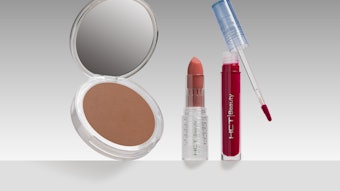
“Give ‘em the razor, sell ‘em the blades,” a quote attributed to King Camp Gillette of the Gillette razor company, is perhaps the best known example of a strategy driven by revenue through the sale of consumables.
While this is a legitimate strategy, it is most profitable when the company supplying the consumable can remain the sole source provider. When that is the case, prices and profit margin can be kept artificially high and the end user has no choice but to keep coming back for more.
However, alternatives sprout up. Whether it’s generic options or third party suppliers, it’s impossible to keep the lid on a consumable for too long.
The Banding Challenge
Many cosmetic companies use film and paper banding to secure lids to containers, as a security measure, and to replace expensive shrink films which often compromises the integrity of the product due to exposure to heat. Stacks of trays and sachets are also typically banded, replacing chipboard sleeves, trays and small cartons.
In regards to suppliers, banding equipment manufacturing is dominated by overseas companies. Still, those companies that invest in such equipment continue to purchase from the same source, unaware that less expensive domestic alternatives exist. As a result, the overseas equipment manufacturers hold a virtual monopoly on the pricing of film and paper banding rolls.
The ‘Other’ Type of Banding
Google the word “banding” and the top results are sure to be related to the industrial steel, poly and polyester bands used to secure pallets or other boxed goods for shipping. Less well known is the “other” type of banding: poly film and paper used to secure lids to containers and products packaged in corrugated trays.
These banding film and paper are often used as a more economical, “greener” (less waste) alternative to shrink film and poly bags.
At first glance, rolls of film and paper banding might be considered a commodity product. Available in a variety of roll sizes in clear or colored poly, or brown and white paper, these consumables appear to be standard items that could be supplied by just about any conventional packaging supply house.
However, this is not the case. Most packaging supply distributors offer conventional packaging materials (stretch film, bubble, foam, corrugated and Jan/San products, etc.), but don’t have the converting capabilities to provide these films or paper, so they don’t offer them.
Only a rare combination of paper/film distributor and converter is qualified to provide this type of material, one that understands the specific details of the consumables required for the various overseas brands and the requirements such as thickness of the material, width and other key details.
The Domestic Advantage
Overseas suppliers might take weeks of lead-time to restock banding supplies including production and shipping; however, a domestic source can ship standard stock the same day and most special stock requirements within a few days.
A strategy for example, is to offer consignment programs that allow the customer to only pay for the material they use on a monthly basis. This also allows inventory and payment to be managed electronically.
Consignment allows the customer to have 60-90 day supply in their warehouse. If the customer gets suddenly get busy, the materials are readily available at disposal. Furthermore, there are considerable transportation savings shipping 60-90 days compared to monthly shipments.
A domestic supplier can have other advantageous programs as well. Stable pricing can be further achieved with contracted blanket orders and dated deliveries for up to one year. This ensures meeting budgetary forecasts. In conclusion, since consumables must be continually ordered, the savings will go directly to the bottom line.
![Curious about the latest trends in Beauty and Personal Care innovation? [download free report]](https://native-x.imgix.net/allured/65fde687b40d3e0001e2ce0d/_Thumbnail%20Image%201-19-24.jpg?crop=focalpoint&fit=crop&fp-x=0.5&fp-y=0.5&h=191&w=340&auto=format%2Ccompress&q=70)








